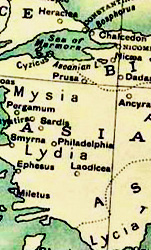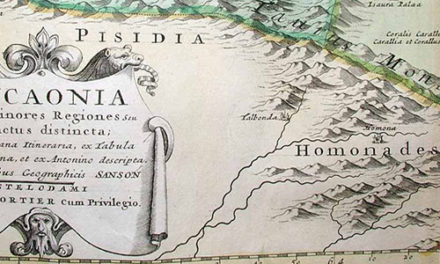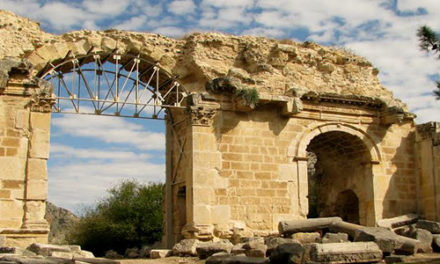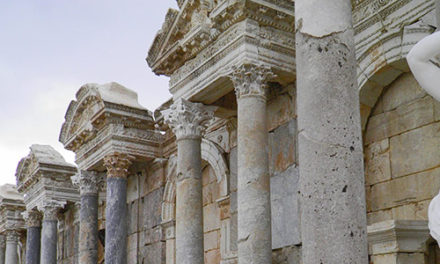Location: North-western Anatolia
Biggest city: Pergamon
Roman province: Asia
Their first mention is by Homer, in his list of Trojans allies in the Iliad, and according to whom the Mysians fought in the Trojan War on the side of Troy, under the command of Chromis and Ennomus the Auger, and were lion-hearted spearmen who fought with their bare hands.
 Herodotus in his Histories wrote that the Mysians were brethren of the Carians and the Lydians, originally Lydian colonists in their country, and as such, they had the right to worship alongside their relative nations in the sanctuary dedicated to the Carian Zeus in Mylasa. He also mentions a movement of Mysians and associated peoples from Asia into Europe still earlier than the Trojan War, wherein the Mysians and Teucrians had crossed the Bosphorus into Europe and, after conquering all of Thrace, pressed forward till they came to the Ionian Sea, while southward they reached as far as the river Peneus. Herodotus adds an account and description of later Mysians who fought in Darius’ army.
Herodotus in his Histories wrote that the Mysians were brethren of the Carians and the Lydians, originally Lydian colonists in their country, and as such, they had the right to worship alongside their relative nations in the sanctuary dedicated to the Carian Zeus in Mylasa. He also mentions a movement of Mysians and associated peoples from Asia into Europe still earlier than the Trojan War, wherein the Mysians and Teucrians had crossed the Bosphorus into Europe and, after conquering all of Thrace, pressed forward till they came to the Ionian Sea, while southward they reached as far as the river Peneus. Herodotus adds an account and description of later Mysians who fought in Darius’ army.
Strabo in his Geographica informs that, according to his sources, the Mysians in accordance with their religion abstained from eating any living thing, including from their flocks, and that they used as food honey and milk and cheese. Citing the historian Xanthus, he also reports that the name of the people was derived from the Lydian name for the oxya tree.
The Mysians seem to have been Thracians who crossed over to Asia at an early period. Mysia was subject to Lydia and later, under Persian rule, formed with Lydia one of the satrapies created by Darius I. After the death of Alexander the Great, the country shared in the vicissitudes of Asia Minor during the wars among his successors. Mysia became important in the 3rd century BC as the center of the kingdom of Pergamum, a Hellenistic state that controlled much of western Asia Minor. In 130 BC, Pergamum came under Roman rule, and Mysia became part of the Roman province of Asia.
Cities in Mysia
The most important cities were Pergamon in the valley of the Caïcus, and Cyzicus on the Propontis. The whole sea-coast was studded with Greek towns, several of which were places of considerable importance; thus the northern portion included Parium, Lampsacus and Abydos, and the southern Assos, Adramyttium. Further south, on the Eleatic Gulf, were Elaea, Myrina and Cyme.





